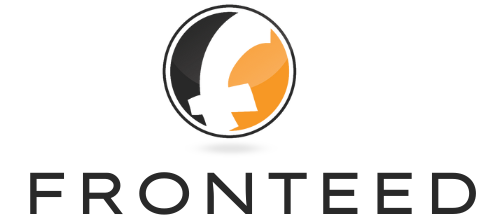Setting up a management group for production in an enterprise can be a crucial step in organizing and managing resources effectively. With the increasing complexity of modern enterprise IT environments, it can be challenging to ensure that all resources are properly aligned with business goals and compliance requirements. A management group provides a hierarchical structure for organizing resources such as subscriptions, policies, and access control, making it easier to manage and govern enterprise-scale environments.
In this article, we will discuss the importance of setting up a management group for production in an enterprise, and provide a step-by-step guide on how to create and configure a management group. Whether you’re a seasoned IT professional or new to enterprise management, this article will provide valuable insights and practical tips to help streamline your organization’s IT operations.
Defining the Management Group

Establishing a management group for production in an enterprise can help ensure the production environment is set up and maintained properly.
A Management Group is made up of different personnel and processes that help to ensure the successful operation of the production environment. It is important to define the roles and responsibilities of the Management Group to ensure that the production environment is in the best state possible.
This section will discuss the different aspects of the Management Group and how they can be utilized to ensure success.
Establishing the objectives
Establishing precise objectives for the management group is necessary in order to ensure that the team is able to effectively plan and execute a production strategy that leads to optimal results. Objectives should be specific and measurable, with achievable timelines for completion. To begin, consider the end goals of your production effort and work backward to define milestones that need to be accomplished in order for the business goals to be met. These objectives should also be aligned with relevant strategies from key executives or team leaders, such as understanding customer needs and developing systems for the efficient delivery of products or services.
Additionally, an assessment of resources may help you determine realistic objectives and appropriate steps needed to reach those objectives. It’s important that each team member understands their individual roles in contributing toward achieving success in reaching the overall management group’s targets. Once action items and deadlines have been established, communicate regularly with members on progress updates and make adjustments as needed if changes arise due to external forces like changing customer demands or operational performance issues.
Having a successful management group is essential for pushing any production initiative forward, so ensure that all expectations are clearly specified before starting the process.
Defining the scope of the management group

The scope of the management group must be carefully considered when setting up production in an enterprise environment. This involves defining the roles, responsibilities, and reporting hierarchies of each team member within the group to ensure that it is properly organized and structured to function optimally. Additionally, understanding the goals, objectives, and strategies of each team member should be a priority in order to ensure that their collective efforts result in tangible outcomes and a successful execution overall.
When defining the scope of the management group, it is necessary to consider the various structural elements—membership levels, decision-making authority, and operational dynamics—that may influence its effectiveness. In terms of membership levels, decisions must be made regarding who is involved in the management group and at what level they are involved; this could include directors at higher levels or executives from other organizations. Establishing roles and responsibilities for members within this structure allows for greater accountability as well as assurance that tasks have been delegated appropriately to those capable of completing them with success. Furthermore, setting up a framework for decision-making can help minimize potential delays or miscommunications between members by providing explicit guidelines on how decisions will be made collectively or by whom specific decisions should be taken by those with expertise on certain matters.
Finally, understanding how this group will function operationally can help ensure that teams are able to work together efficiently without unnecessary overlaps or gaps in the effort. This involves determining how teams overlap if any exist at all; creating processes for necessary forms of communication; deciding which tools will be used to carry out tasks effectively; designating members as representatives responsible for providing updates throughout each process; and outlining key timelines for progress reports among other elements. Defining these functions ahead of time helps streamline activities and better prepare everyone involved for managing production from start to finish.
Establishing the roles and responsibilities

When establishing a management group in an enterprise setting, it is important to define the roles and responsibilities of each member. This should be done through staggered meetings with senior management or one-on-one meetings with individual managers. It is essential to create clear expectations from the very beginning to ensure long-term success for the group and clarity for everyone involved.
The roles and responsibilities should include defining what tasks will fall within the scope of the management team and how they will work together to implement strategies. This could include assigning lead positions, identifying performance indicators, specifying communication protocols, outlining leave policies, setting goals, providing feedback on job performance, handling any disputes between different departments or personnel, and ensuring compliance with relevant regulations.
As a manager within a large organization, it is also important to understand how decisions made by other managerial teams impact your team’s goals and objectives as well as consider how your own team’s operations can affect larger organization processes. In order to work towards effective collaboration between departments and teams in an enterprise environment it’s important that every member understands their role within their respective groups as well as in context within the overall organization structure.
Organizing the Management Group
A successful Production Management Group should be organized in a way that allows for efficient production and maximum responsiveness to customer needs. This means having people in leadership positions who are knowledgeable and experienced in the area of production management, as well as having clear policies and procedures in place.
In this section, we’ll discuss some tips for organizing your Management Group to ensure successful production.
Establishing the team structure
Every production enterprise requires careful planning and organization in order to be successful. The setup of a management group is one of the most important steps in organizing your production process. By establishing the appropriate team structure, you can create a system that is organized, efficient, and supportive of ongoing operations.
When building the team structure for your management group, consider the roles that are needed to lead each area of production and how those roles will interact to achieve desired outcomes. Start by creating a clear hierarchy within the organization, assigning each level specific tasks and responsibilities. Make sure to have clear lines of communication between management levels; this will ensure that everyone is on board with any decision-making or strategies developed. Also, consider having a designated individual or individuals who are responsible for overseeing the entire management group; this type of role will help ensure consistency with initiatives and objectives across the entire organization.
Once you have determined which roles are necessary and have established all corresponding teams, assign individuals (or task forces) to lead each team. Assignments should be made with careful consideration as different individuals might bring different strengths or personalities which could benefit an initiative significantly. Additionally, when selecting each leader make sure there is sufficient leadership development and support available for them so they can succeed in their role.
By establishing a well-structured team of highly skilled personnel that command respect throughout the organization – your production process can be led more effectively towards optimization and efficiency goals set forth by your operations team.
Setting up the communication channels

This includes establishing channels of communication that are easily accessible and understood by all team members, such as a messaging or chat platform, or an online calendar. Constructing these channels and creating a clear plan of action ahead of time, will ensure that all team members are aware of any updates or changes that may take place during the duration of the production process.
Another important factor to consider is to develop rules and regulations for communicating throughout the entire process, such as who should be assigned newly created tasks and when communication regarding updates should be sent out. Most importantly, implementation and adherence to protocols should be monitored by designated team leads. These leads should provide ongoing feedback on how the production process is running and what improvements can be made if there are any day-to-day issues or blockers being faced. Doing this ahead of time will help ensure that efficiency levels are maintained while working towards completing tasks on time.
Establishing the decision-making process
In order for the management group to effectively lead a production team, it is necessary to establish a clear decision-making process. Establishing rules and procedures that everyone can follow will help ensure that all decisions are handled promptly and professionally.
The first step in setting up the decision-making process within the management group is to define who is authorized to make decisions within each level of the organization. This will help promote consistency across multiple projects and ensure accountability of each individual with regard to their decision-making authority.
Once roles have been set, it will be important to establish a chain of command so that once decisions have been made by one individual, they can be passed up the line for approval or further discussion as necessary. This step is important for creating an efficient organizational structure and communicating changes quickly if needed.
Additionally, it will be vital to establish communication guidelines for members of the management group when making decisions. By clearly defining how decisions should be shared with the rest of the team (for example, through emails or specific meetings), managerial issues can be addressed more effectively and efficiently, as everyone is aware of both expectations and procedures ahead of time.
Implementing the Management Group

Establishing a Management Group for production in an enterprise is an important step for organizations. This is because it allows for better control and optimization of production processes, as well as a more organized way of managing the enterprise.
This section will cover the steps for implementing a Management Group for production in an enterprise.
Developing the operational processes
Once the management group has been established and roles have been assigned, the next step is to develop the operational processes needed to ensure efficiency and effectiveness. This includes ensuring that policies, procedures, standard practices, and regulations are complied with.
It also involves the development of operational plans, quality procedures, and employee performance standards. Organizational tools such as scheduling systems and task communication tools must be implemented to support a smoothly functioning operation. Additionally, tracking systems must be designed to monitor production activities in order to measure outcomes against desired objectives.
Once these processes have been established, they should be tested to assess their efficiency before full implementation in the production environment.
Defining the metrics and KPIs
It is important to clearly define metrics and key performance indicators (KPIs) when establishing a Management Group. Metrics are measurements that help quantify the results of an enterprise operation. They may be direct measurements, such as sales figures, or indirect calculations, such as a customer satisfaction rating for a service or product. KPIs are used to measure the success of an organization’s operations against pre-defined targets and objectives. Establishing measurable goals helps meet expectations, assess management decisions, and track progress on performance initiatives.
The right metrics should be chosen based on your company’s objectives and needs, as well as its environment. For example, if your goal is to reduce turnover among management staff, measuring employee retention rate is one metric that can help assess that goal’s success. Additionally, companies need to use multiple metrics across departments to understand the big picture of their organization’s performance; this includes finance and operations as well as other areas related to customer service and employee satisfaction.
The Management Group should also decide how often KPIs should be measured; this could range from quarterly or yearly reviews up to more frequent monitoring depending upon the specific initiatives in place. Having regular meetings focused on KPI and metric analysis ensures that progress can be monitored closely without delay due to any variance between expected results and actual output in either direction: Examples of this could include making up ground after unexpectedly low returns on investment or taking advantage of unforeseen opportunities when they become available through analysis of KPI data not available through more traditional reporting methods such as financial reports or customer feedback surveys. Operational KPIs provide the additional context necessary for better decision making which allows companies to remain agile while keeping clear visibility over their efforts toward a successful enterprise environment for production execution for long-term growth objectives.
Setting up the reporting system

Setting up a reporting system within the management group is a critical part of production in an enterprise. Establishing this system enables managers to have better access to data and insights from all departments, which helps them stay informed and make the best decisions possible. It also serves as an important communication tool between the various teams.
The first step to setting up a reporting system is determining which data points need to be collected for each team or department across the organization. This could include information about performance, goals, customer satisfaction levels, resources used, employee engagement, or any other metrics relevant to assessing business operations. Depending on the size and complexity of your organization, it may also be necessary to customize reports so they are tailored to individual needs or preferences.
Once you have identified all the key elements that need to be included in your reports, it’s time to set up the actual structure of your reporting system. This will depend on how you want data collection, analysis, and presentation processes organized within your organization. For example, you may decide that there will be one single report with consolidated information from all teams or departments that needs continual updating by an administrative team; alternatively, you might create separate reports for each team or department with different frequency levels tailored to their unique needs.
The next step is choosing appropriate software solutions for managing and analyzing data within your reporting system. Popular enterprise resource planning (ERP) applications such as Oracle can help streamline operations by automating many processes associated with collecting and analyzing data from multiple sources — eliminating manual intervention in many tasks and reducing error rates significantly.
Additionally, there are cloud-based analytics tools like Microsoft Power BI that allow businesses to easily generate visually-appealing reports from large amounts of structured (and unstructured) data quickly without IT resources involvement; however they are usually subject to usage fees either monthly or annually depending on the service provider selected by you — so it’s always important to consider cost-effectiveness when choosing a solution for creating custom dashboards/reports as part of building out a reporting system in your management group setup process.
FAQs

How do you assign permissions to a management group?
Permissions can be assigned to individual users or groups, or through role-based access control policies.
How do you configure policies within a management group?
Policies can be configured through the hierarchy, allowing for centralized control and enforcement of policies across all resources within the group.
Can a management group be used to manage resources across multiple cloud providers?
Yes, it can be used to manage resources across multiple cloud providers, allowing for centralized management and governance of hybrid or multi-cloud environments.
How do you ensure compliance with regulations and policies within a management group?
Compliance can be enforced through policies and access control, as well as through regular audits and monitoring of resources.
What are some tools and platforms that can be used to manage a management group?
Depending on the specific requirements and environment, tools and platforms such as Azure, AWS, Google Cloud Platform, or third-party management software can be used.
How do you monitor and optimize costs within a management group?
Costs can be monitored and optimized through regular analysis and reporting, as well as through resource tagging and allocation policies.
How do you ensure security within a management group?
Security can be enforced through access control and permissions, as well as through regular security assessments and monitoring.
Can a management group be used for non-IT resources, such as facilities or HR?
Yes, it can be used for non-IT resources, allowing for centralized management and governance of all enterprise resources.
What are some common pitfalls to avoid when setting up a management group for production in an enterprise?
Some common pitfalls include not properly defining the hierarchy, not assigning permissions or policies correctly, and not regularly monitoring and optimizing resources and costs.
Conclusion
Upon completing the above steps for setting up a new management group within an enterprise, our organization is ready to start managing production processes in an efficient and effective manner.
By creating an organizational structure with appropriate roles and responsibilities, our teams can more easily shift between production tasks while providing the greatest visibility over production operations.
The use of well-defined processes, procedures, and reporting tools will ensure that our teams have clarity into the status of all production efforts, enabling us to quickly respond to any issues or concerns that come up as part of the process.
Finally, establishing a culture that encourages workers to be proactive in problem-solving and identifying new methods of optimization will ensure that the organization continues to stay ahead of the competition.

